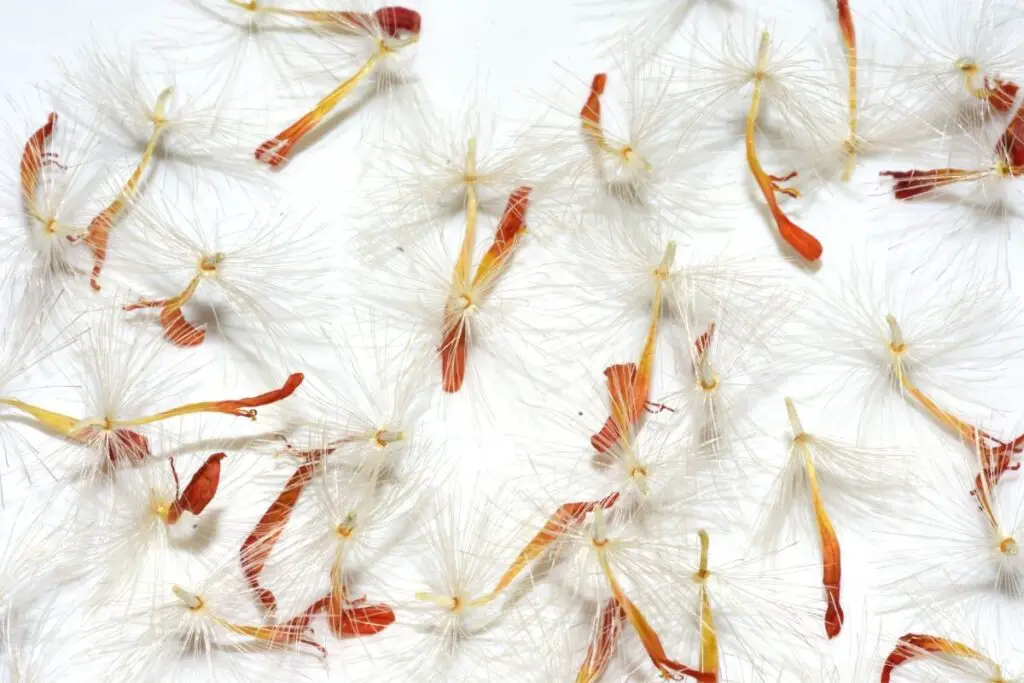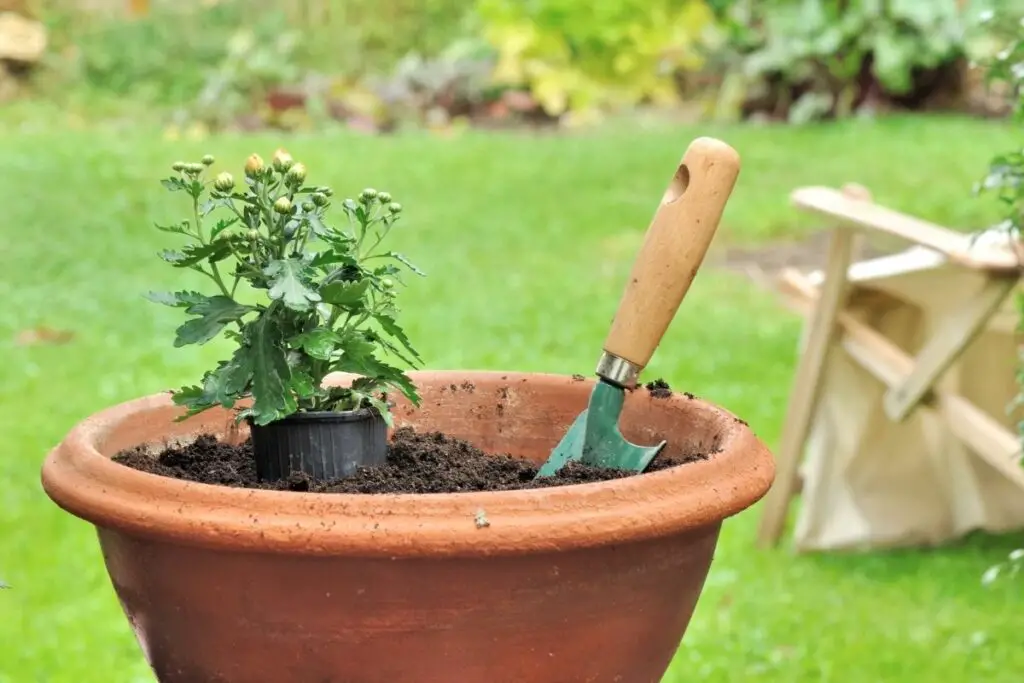Daisies are one of the favorite flowers of gardeners, which are grown in huge numbers. They are colorful and make your garden look pleasant and graceful. These flowers can be grown in large fields as well as inside the home itself.
However, whenever you decide on planting these flowers a common question that comes to everyone’s mind is when to sow daisies seed?
The best time to plant daisy seeds is in early spring. Daisy seeds develop correctly if a good amount of water and light are provided. The ideal temperature for growing daisies is 19°C to 22°C [65°F to 70°F]. However, the growth of the plant will depend upon environmental factors around it.
In this article, we will discuss all the factors that affect the growth of daisies. So, let’s dive right into it.

Things to remember while planting daisy plants
During the sowing process, You should plant the seeds 1/8 inch deep during a cooler climate in sunlight. It can be sown outside and inside in a pot or a container, and the temperature should be 70°F.
As sunlight plays a significant role in germination, You should plant daisies seeds in a sunny place. It would be best to cover sown seeds with an eighth inch of soil to allow the sun to reach the seeds.
Seeds should be rich in nutrients. It would help plant the seeds in healthy soil using a mixture of sand, peat moss, and manure compost soil for good growth.
You should make sure that your seeds are moist. It would be best if you watered the seeds regularly to keep them moist.
Four factors play essential roles in daisies’ growth.
- Sunlight
- Water
- Soil
- Fertilizers
Sunlight
Daisies require plenty of sunlight, and they flourish better when direct sunlight is provided in a cooler climate. Sunlight helps the plants in synthesizing and absorbing the energy directly from the sun for consistency.
You have to make sure that daisies need a sufficient amount of sunlight unless and until it’s a humid climate.
Also read: How Much Light Do Daisies Need? (Daisy Light Requirements)
Looking for gardening supplies? We have tested 100's of products before recommending them to you guys. Check out our best pick below:
| Image | Gardening Supplies | Best Price? |
|---|---|---|
 Top
Top Top
Top | Raised Garden Bed Kit | Check On Amazon |
 | XLUX Soil Moisture Meter, Plant Water Monitor, Soil Hygrometer Sensor for Gardening, Farming, Indoor and Outdoor Plants, No Batteries Required | No Results |
 Top
Top Top
Top | 82 Pcs Garden Tools Set and Extra Succulent Tools Set | Check On Amazon |
 | Joeys Garden Expandable Garden Hose with 8 Function Hose Nozzle, Lightweight Anti-Kink Flexible Garden Hoses, Extra Strength Fabric with Double Latex Core, (50 FT, Black) | No Results |
 Top
Top Top
Top | Dual Chamber Compost Tumbler | Check On Amazon |
 Top
Top Top
Top | Sunnyglade Plant Stakes | Check On Amazon |
 Top
Top Top
Top | Organic Cold Pressed Neem Seed Oil | Check On Amazon |
 Top
Top Top
Top | Mighty Mint Gallon :-Insect and Pest Control Peppermint Oil | Check On Amazon |
 Top
Top Top
Top | Scotts DiseaseEx Lawn Fungicide | Check On Amazon |
 Top
Top Top
Top | Jacks Classic 20-20-20 All Purpose Fertilizer | Check On Amazon |
 Top
Top Top
Top | 30,000 Seeds Pollinator Attracting Wildflower Mixture | Check On Amazon |
 Top
Top Top
Top | Survival Vegetable Seeds Garden Kit-Over 16,000 Seeds | Check On Amazon |
Water
Water helps daisies for the germination of seeds and the development of plant roots. It also provides nutrition to the plants. After planting daisies, it needs a good amount of water and rain.
Daisies require at least 1 to 2 inches of water per week for strong roots and healthy flowers. You should water daisies in an adequate amount.
Also read: How Much Water Do Daisies Need? (Daisy Water Requirements)
Soil
Daisies flourish in neutral or somewhat acidic soil, with PH values ranging from 6.0-8.0 on the PH scale. The soil should include quick drainage for healthy roots.
If the soil composition is wrong, it will affect the plant as the water will remain in the roots for a more extended period, and the leaves will start dropping and it will wilt. For solving this problem, you need to place the plant in sunlight for getting dry.
Soil should not be clayey as it will hold the water for a more extended period. The drainage should be done appropriately.
Daisies roots need enough space to breathe for which sandy soil is best. This soil can help daisies hold enough moisture. It will help to keep these roots healthy, and the plants will flourish.
Also read: What Kind Of Soil Do Daisies Need? (Daisy Soil Requirements)
Fertilizers
Fertilizing is very important for daisies. When your daisies start blooming beautifully, they also need some additional nutrients. To keep the daisies healthy, providing them nutrition is very necessary.
You should apply all-purpose liquid fertilizer every two weeks after planting and once a month after that. You can use high phosphorus fertilizers (10-15-10) just before the plant blooms for best results.
As soon as the flowers begin to dry and start to fade, you should remove or cut them with a sharp object. You should not pinch or pull the flowers because it will not give you the best results.
This technique will help daisies produce more flowers, and also it will improve the overall appearance of daisies. Regularly removing dead flowers will encourage them to bloom more beautifully and in a considerable number.
Also read: Do Daisies Need Fertilizer?
How to grow daisy flowers outdoors?

You first need to take a tray and a seed starting mix. A seed starting mix is a soilless potting mix that helps in the germination of seeds. After filling the tray with a seed starting mix, you need to use a spray bottle to nourish the cell’s mix.
After that, you need to take a toothpick or anything to poke a hole in the center. The hole should be ¼ inch(6.4mm) deep. Place a seed in each of the pits and cover it with the remaining soil.
After germination, for keeping the soil moist, watering is necessary. To moisten the potting medium, you need to water the seeds. After watering, the seeds will get settled.
For keeping the seeds warm, you need to use a sheet of plastic wrap to cover the top. It will also help the seeds to remain moist. You need to keep that plastic for about 2 to 3 weeks until the seedlings have grown.
You need to place the seeds where they will get 8 hours of indirect light every day, and it will also help the seeds to remain warm.
After germinating seeds, the seedlings will continue to grow. Make sure that the seedling is not ready for transplantation unless and until they have grown two sets of leaves.
You need to choose a proper place in the garden where the seedlings will get direct sunlight from the sun. Daisies like a lot of light, so adequate sunlight will be suitable for them to grow rapidly.
Soil drainage can be improved by tilling 2 inches of compost into the garden before planting it.
Dig holes for the seedlings. The holes should be about 30 to 40 cm deep to allow airflow between a plant’s roots.
Remove the seedling slowly from the trays and place them in each hole. Then you need to cover them with soil.
When the plant grows, water them once a week to keep the soil moist but not at all soggy and wet. Water them in the morning so that extra excessive water will dry in the sunlight.
When daisies start to bloom, you need to add nutrients monthly to them, such as liquid fertilizers to the water. Fertilizers will help daisies to remain healthy and to produce in vast numbers.
You should start trimming off the dead flowers and leaves because it will encourage daisies to grow more beautifully. You can also cut the fresh flowers and keep them in water so that the flowers can survive for several days.
Growth stages of daisy flowers
We can divide the life of the daisy flowers into five stages – seed stage, germination stage, growth stage, pollination stage, and seed spreading stage.
- Seed stage: Every plant starts with a seed that holds a tiny plant inside, which grows to become a mature plant.
- Germination stage: When you plant a seed inside the soil and water it, all the functions for the seed’s growth into a plant start taking place.
- Growth stage: This is when the seed starts transforming into a seedling. The roots and shoot come out.
- Pollination stage: This is when air carries pollen from the male part of the daisy to the female part.
- Seed spreading stage: The movement of seeds from the parent flower or plant with the help of external factors such as wind, birds, insects, etc.
How to grow daisy flowers indoors?
A container with drainage holes is essential if we are planting indoors. It would be best to choose a miniature pot if possible so that you can quickly move the daisies outside as the weather allows.
You need to fill the container with a light potting mix that contains a mixture of peat, perlite, or vermiculite. After filling the container with a potting mix, you need to moisten the soil with water.
You need to use a spade for digging a hole in the soil. The hole should be large enough to hold the root ball.
After digging a hole, you need to transfer the daisies from the garden or a seed tray to the container, and then you need to cover the roots with the soil. You should make sure that you are doing this process smoothly and not in a hurry. Use your hands gently to pack the soil around the roots.
You need to start watering the plants every 3 to 5 days per week. The soil can be moist but not wet and muddy. Over-excessiveness of water can cause problems for daisies to grow. If the soil is arid, you need to water the plants thoroughly.
The ideal temperature for common daisies is 19°C to 22°C (65°F to 70°F), so they don’t need direct afternoon sun. For providing them with enough sunlight, find a window that gets a lot of direct morning sun.
Plants require additional nutrients. Every month or 30 days, you should dissolve a 15-5-15 fertilizer in water before watering the plant.
When the flowers start to die or wilt, You should trim them off. It will encourage the plants to produce more flowers. Not only flowers, but you should also remove the dead leaves to create a healthy environment for daisies.
Final words
The best time for planting daisies is in early spring or a cooler climate. Four factors are essential in daisies’ growth: sunlight, water, soil, and fertilizers.
You can grow daisies in two methods indoors and outdoors. You should give at least 6 hours of proper sunlight to your daisies. You need to make sure that while watering your daisies, the soil should be moist and never soggy and wet.
Ref: Wikipedia, Britannica, University Of Florida, Ucanr.edu
